I was never a good storyteller... until I realized it wasn't that important.
The year was 2015 and I had been invited by a publisher to visit the National Children's Book Foundation (FNLIJ), in Rio de Janeiro. Among many activities, writers and illustrators from all over Brazil meet to talk to many children.
My friend Ilan Brenman and I were going to present our book "Enganos". It was my first time presenting at an event and I was relaxed, as Ilan has always been able to express himself very well in public. However, I was very shy, but I understood that I had to be there, whether to talk, draw, or answer some questions.
I was already at the event when Ilan called me to say that he wouldn't make it on time and I'd have to do the presentation on my own. I was desperate and at the same time, a thought came to mind:
"If I'm an illustrator of books for children, I'm going to have to learn how to communicate with them. I'll give it a try, let's see what happens."
When I entered the room I was faced with almost 200 children, and I didn't know what to do or how to behave.
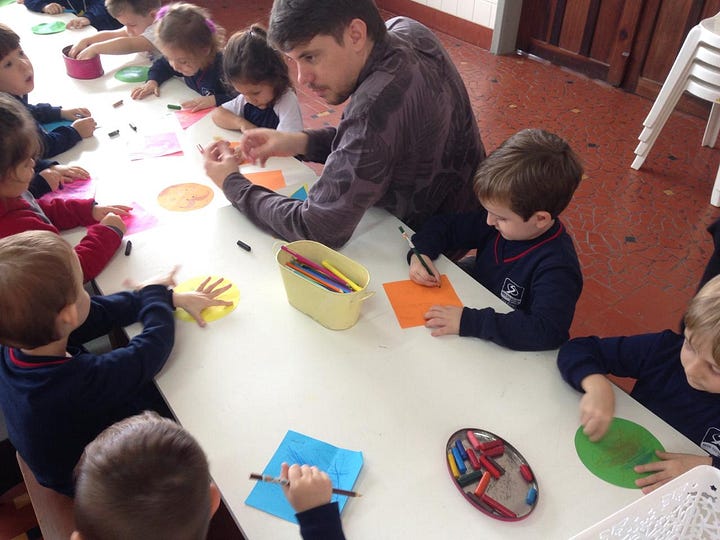
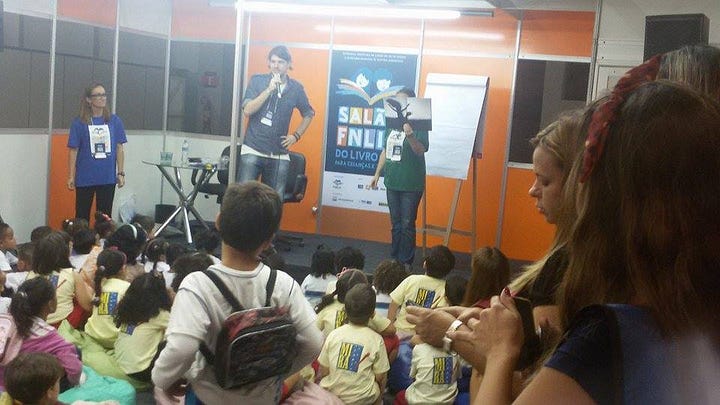
I opened the book, which had no text, only pictures. The children were trying to guess what was happening in each scene, they were shouting and screaming and I took advantage of this excitement and made them stand up and even dance. The teachers were desperate, but it was really nice, it was a good experience for me.
Even though I'd had an incredible day, I returned home with a certain doubt: Was this the audience I wanted to talk to? Would I continue making art for children? How willing would I be to meet and talk to this audience that was different from me?
Although it sounds strange, talking to children isn't easy for most of us artists. Our training usually comes from graphic design or fine arts. We're used to attending vernissages and talking to adults about creative processes, the materials we use, and our thoughts and intentions behind each scene. But this audience doesn't consume my work. Yes, it's great to go to elegant events, with nice drinks and canapés. But my readers aren't there. So I put my shyness aside and decided that I would be in schools, talking to children and their parents.
I started visiting schools and accepting my mistakes, which was fundamental. Why do I say that? Because I've never been a good storyteller. I don't read stories easily, with good intonation or interpretation of the characters.
But that's my way of telling stories. And then I discovered that children are also interested in people who are a bit dull telling stories, because they are there for the story and the exchange.
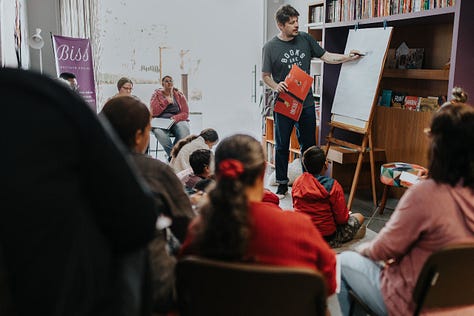
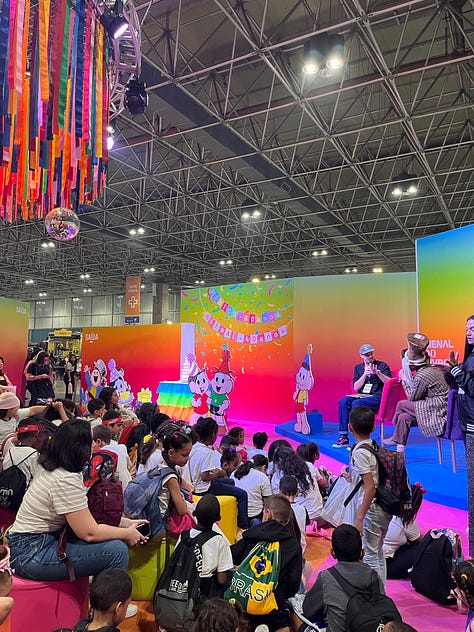
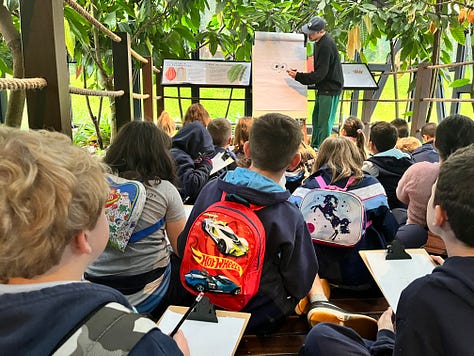
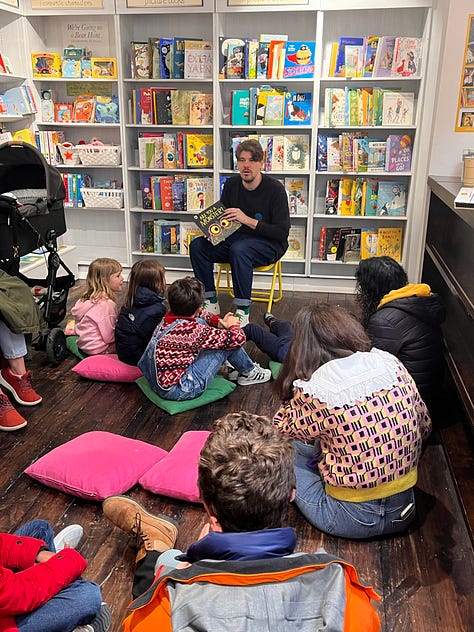
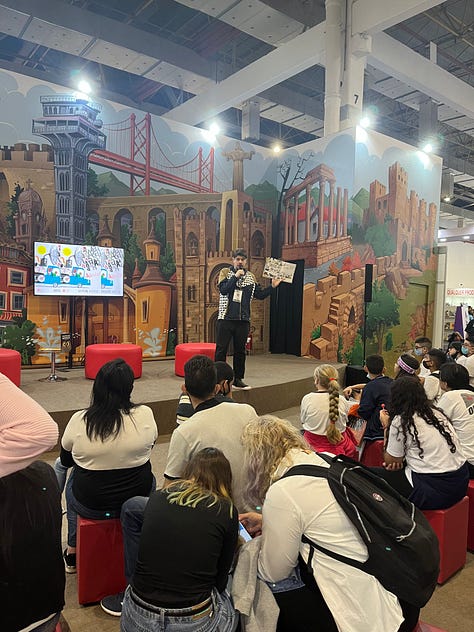
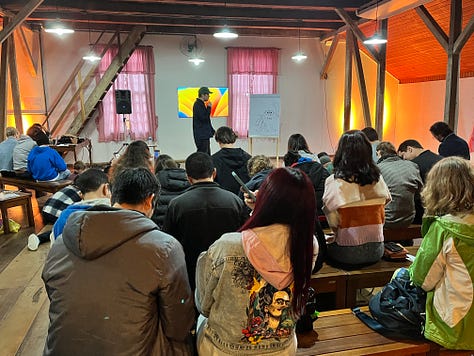
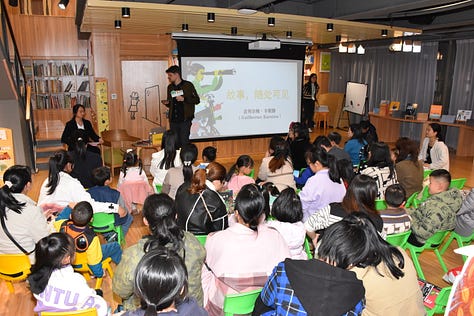
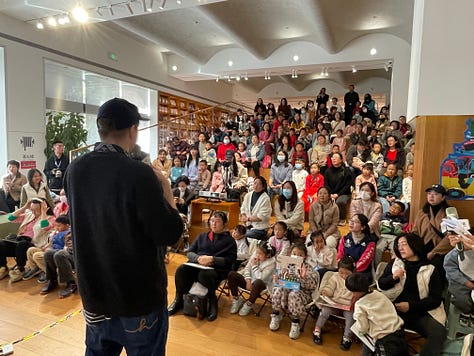

Children sometimes say things and make comments that make no sense at all. But that's where the magic is. They are so out of context that they become cool and funny and are incorporated into the story.
It's incredible to see them excited when the author, the guy who made the book, is there in front of them. It's showing them that they can also do this one day.
I come home full of stories to tell my family about the day and how they perceived the book... and it's a great laboratory for us writers. This experience makes us sharper for the next books to be written.
It's not an easy process, but it's worthwhile. As an artist with a background in advertising, I'd say: we need to be close to our audience, to the children. And it's a lot of fun there.





